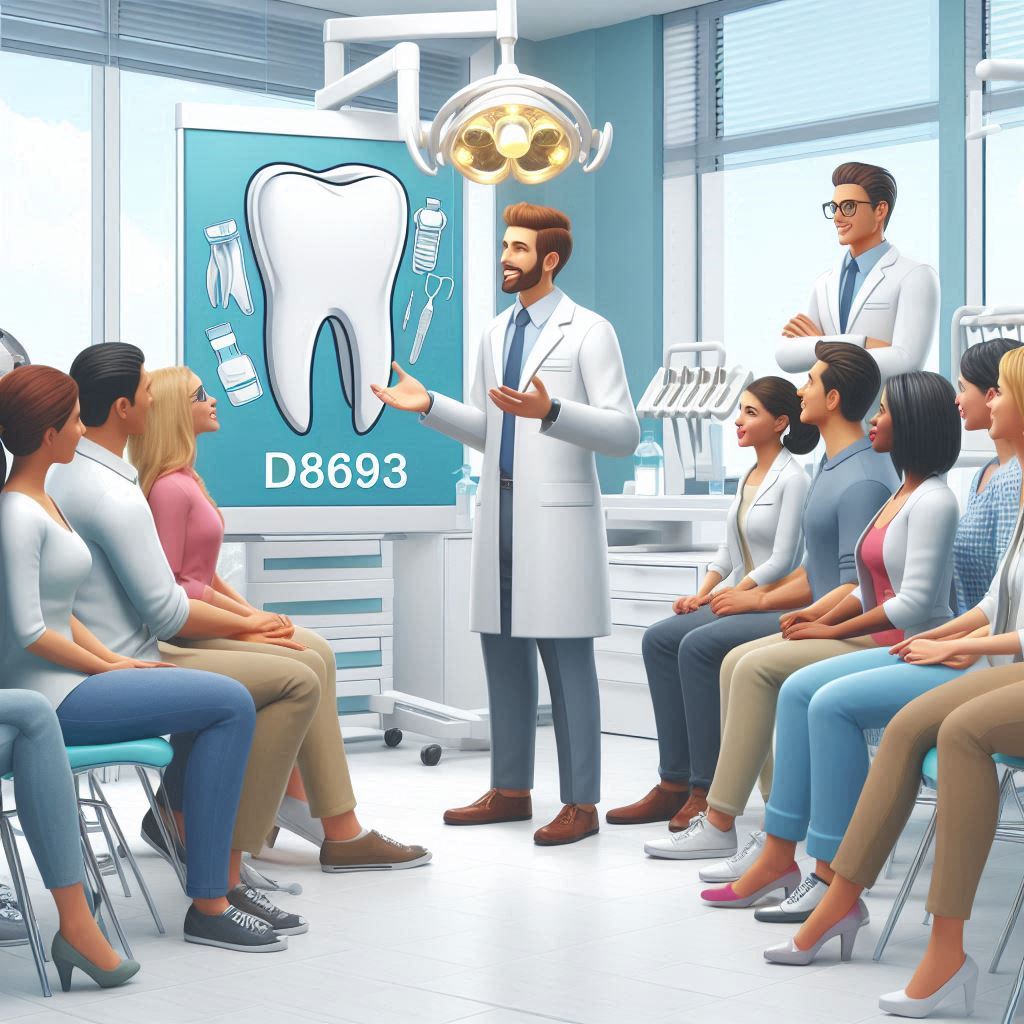D8693 Dental Code
Dental coding is a critical aspect of patient care, billing, and insurance claims in dentistry. Among the numerous codes used, D8693 stands out as a unique and often misunderstood entry. Whether you’re a dentist, dental hygienist, insurance professional, or patient, understanding this code is essential for accurate billing and treatment planning.
This comprehensive guide will explore D8693 in detail, covering its definition, applications, insurance implications, and real-world examples. By the end, you’ll have a thorough grasp of how this code functions within the dental industry.

2. What is the D8693 Dental Code?
The D8693 dental code is classified under the American Dental Association (ADA) Code on Dental Procedures and Nomenclature. It is specifically designated for:
“Repair of a fixed retainer (indirect), includes reattachment”
This means it applies to the repair or reattachment of a fixed orthodontic retainer that has become loose or damaged. Unlike removable retainers, fixed retainers are bonded to the teeth and require professional intervention for adjustments.
Key Features of D8693:
- Pertains only to indirect (lab-fabricated) fixed retainers
- Covers both repair and reattachment
- Does not include initial placement (coded under D8680)
3. Purpose and Importance of D8693
Fixed retainers are crucial for maintaining teeth alignment after orthodontic treatment. When they fail, patients risk relapse (teeth shifting back), leading to additional costs and treatment time.
Why D8693 Matters:
✅ Ensures accurate billing – Prevents misclassification under other codes.
✅ Facilitates insurance claims – Helps patients receive proper reimbursement.
✅ Standardizes dental procedures – Maintains consistency in dental documentation.
4. When is D8693 Used in Dentistry?
D8693 is applicable in several scenarios:
| Scenario | Appropriate Use of D8693? |
|---|---|
| Retainer breaks and needs repair | ✅ Yes |
| Retainer becomes loose and needs reattachment | ✅ Yes |
| Initial placement of a fixed retainer | ❌ No (Use D8680) |
| Adjustment of a removable retainer | ❌ No (Use D8680 or D8690) |
5. D8693 vs. Other Dental Codes
Understanding how D8693 differs from similar codes prevents billing errors.
| Code | Description | Key Difference |
|---|---|---|
| D8693 | Repair of fixed retainer (indirect) | Only for lab-fabricated retainers |
| D8680 | Fixed retainer placement (initial) | First-time application |
| D8690 | Removable retainer adjustment | Not for fixed retainers |
6. Insurance Coverage and Reimbursement for D8693
Insurance policies vary, but many cover D8693 under orthodontic benefits.
Factors Affecting Coverage:
- Type of insurance plan (PPO vs. HMO)
- Annual maximums and deductibles
- Whether orthodontic coverage is included
Pro Tip: Always verify coverage with the insurer before proceeding.
7. Common Misconceptions About D8693
❌ Myth: D8693 covers all retainer repairs.
✅ Fact: Only applies to indirect fixed retainers.
❌ Myth: Patients don’t need insurance pre-authorization.
✅ Fact: Some insurers require pre-approval.
8. Step-by-Step Procedure for D8693
- Examination – Assess retainer damage.
- Debonding – Remove loose retainer carefully.
- Cleaning & Preparation – Clean tooth surface.
- Reattachment/Repair – Use dental adhesive.
- Final Check – Ensure proper fit and function.
(Include a diagram of retainer repair steps here.)
9. Case Studies and Real-World Applications
Case Study 1:
- Patient: 22-year-old with debonded retainer.
- Solution: D8693 applied for reattachment.
- Outcome: Teeth stability maintained; insurance covered 80%.
10. Frequently Asked Questions (FAQs)
Q1: Does D8693 apply to removable retainers?
No, only fixed indirect retainers.
Q2: How much does D8693 typically cost?
Costs range from 100−100−300, depending on the dentist.
Q3: Will Medicaid cover D8693?
Varies by state; check local policies.
11. Conclusion
The D8693 dental code is essential for repairing and reattaching fixed retainers, ensuring long-term orthodontic stability. Proper use prevents billing errors and maximizes insurance benefits. Always consult dental professionals and insurers for accurate application.


